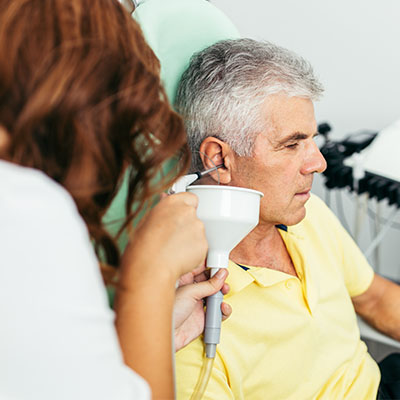Ear Infections &
Ear Wax Removal
Ear Infections &
Ear Wax Removal
An ear infection is an infection that affects the middle ear, the air-filled space behind the eardrum where the tiny vibrating bones of the ear are located. Children are more prone to ear infections than adults, but they do strike adults. Children and adults who are prone to getting ear infections are at risk for hearing problems and other serious complications. It is important to stay in touch with your healthcare provider if symptoms persist.
Ear infections can sometimes clear up on their own, however, if pain begins, it can feel severe. In these instances, antibiotics are often started immediately to clear the infection.
Common adult symptoms of an ear infection include:
- Ear pain
- Drainage of fluid out of the ear
- Trouble hearing
Contact your provider for an acute visit if:
- Ear pain is severe
- Symptoms last for more than a day
- You observe a discharge of pus, bloody fluid or other fluid
- You have trouble hearing

Most ear infections do not cause long-term complications, however ear infections that occur again and again can lead to serious complications such as:
- Impaired hearing. This can occur if there is any permanent damage to the eardrum or other middle ear structures.
- Spread of infection. Infection of other tissues can occur if the infection does not respond well to treatment. For example, an infection of the mastoid, the bony protrusion behind the ear can occur, or rarely, serious middle ear infections can spread to the brain or the brain’s membranes (meningitis).
- Tearing of the eardrum. Tears usually heal within 72 hours, but if not, surgical repair is needed.
The following guidelines may reduce the risk of developing ear infections:
- Try to reduce occurrences of common colds and other illnesses
- Try to avoid secondhand smoke
- Stay current on your vaccinations
Excessive Ear Wax
Excessive wax in your ear can cause a blockage that affects your hearing and/or creates a very uncomfortable sense of pressure. Your provider can determine if you have earwax blockage by looking in your ear with an otoscope (an instrument that lights up and magnifies your inner ear).
Excess wax can be removed with a small, curved instrument called a current, suction, water pick, or a rubber-bulb syringe filled with warm water.
You should never try to dig out excess or hardened ear wax with cotton swabs or other items. You could push the wax further into your ear and cause severe damage to your eardrum or ear canal. Instead, you can try softening the wax by applying a few drops of baby oil, mineral oil, or glycerin.
If earwax buildup is a chronic problem, your provider might recommend medication. Still, because these droplets can sometimes irritate the skin of the eardrum and the ear canal, medication is only recommended when other treatments fail to keep up with the buildup of wax.
